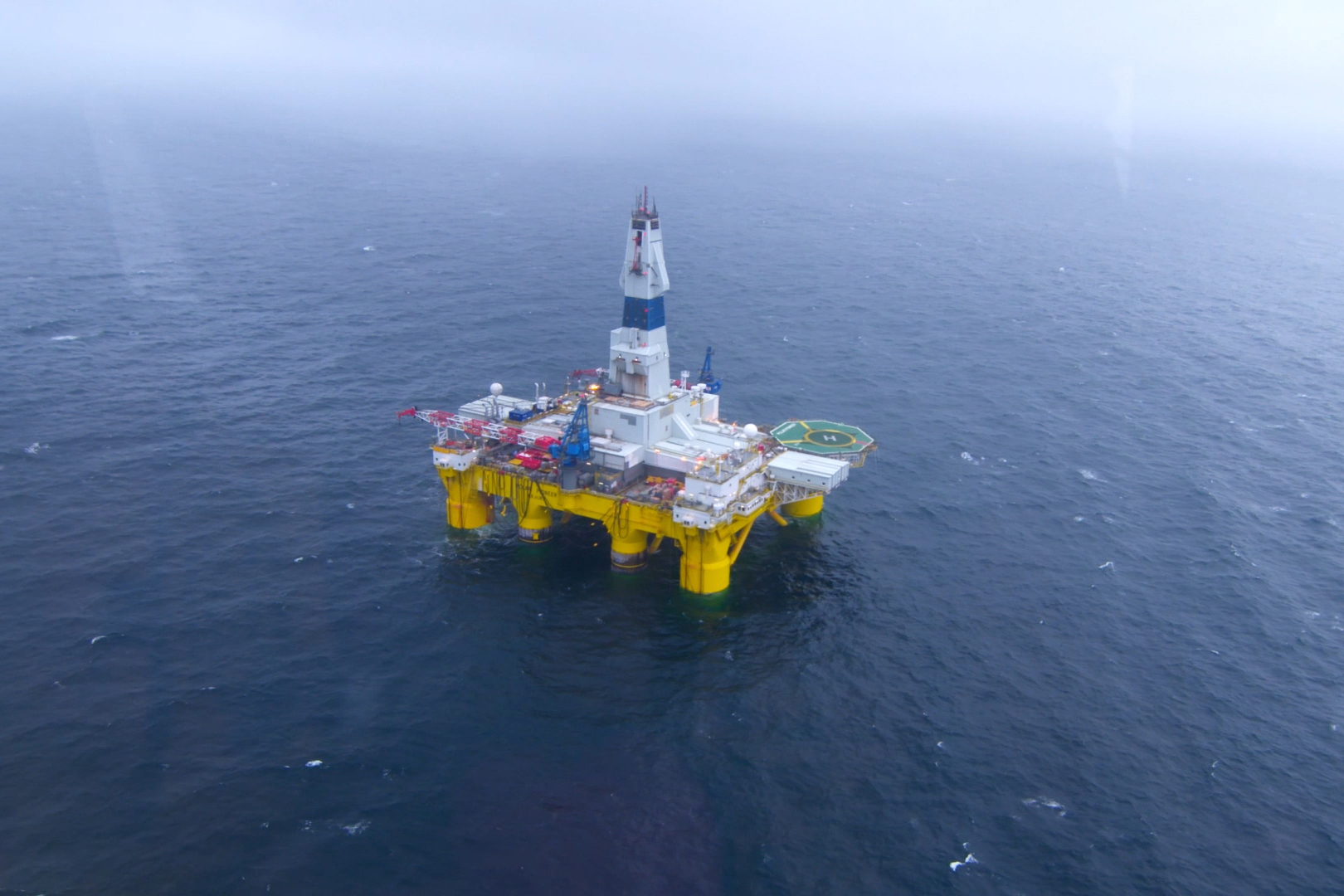Shell returns to Arctic Alaska with new offshore oil drilling plans
This time the company is eyeing leases much closer to shore.

Five years after abandoning an ambitious multibillion-dollar offshore Arctic exploration program, Royal Dutch Shell is again proposing to drill for oil in Arctic Alaska — but this time, in a more modest fashion.
Company unit Shell Offshore Inc., in an Aug. 27 application to the Alaska Division of Oil and Gas, outlined a multiyear exploration plan for 18 leases at West Harrison Bay, in the Beaufort Sea, northwest of the Colville River Delta — just offshore from an area where other oil companies are pursuing exploration and development programs.
The application seeks permission to consolidate the 18 leases into a designated unit, an important step toward development in Alaska. Once such units are established, under Alaska regulations, companies are allowed to hold onto the component leases long as there is diligent development work is being performed.
The West Harrison Bay leases were acquired by Shell eight years ago and have a 10-year term. Creation of a unit would allow Shell to keep the leases after 2022 and give the company more time to do something with them.
“Shell has applied for an extension and unitization of its eighteen Alaska state (shallow) water leases, referred to as West Harrison Bay, in order to preserve our leasehold options,” company spokeswoman Cynthia Babski said in an email. “These leases were originally obtained in 2012. We have sold or relinquished all our frontier licenses in Alaska. We have no further plans for frontier exploration offshore Alaska.”
In its application for unit status, Shell proposed a five-year exploration plan, with drilling envisioned to start in the winter of 2023-24.
The time frame, if approved by the state, will give Shell an opportunity to attract a partner or partners to West Harrison Bay, the application said. Shell “had made solid progress toward that objective,” but the COVID-19 pandemic and the crash in oil prices “negatively impacted Shell’s ability to negotiate a commercial agreement,” the application said.
The new Shell exploration proposal differs substantially from the frontier offshore program the company previously pursued.

The West Harrison Bay leases are in state territory within three miles of shore; the federal leases in the Chukchi Sea were at least 65 nautical miles offshore. The extremely remote Chukchi Sea prospects that Shell was exploring were hundreds of miles away from any existing oil infrastructure; the West Harrison Bay leases are relatively close to other companies’ existing operations in the National Petroleum Reserve-Alaska and in the Colville River Delta area.
Notably, the Harrison Bay leases appear to be in an area connected to the rich Nanushuk geologic formation. The Nanuskuk formation, known for decades but not seriously explored until recently, is the source of oil for major prospects where large amounts of oil have been discovered: ConocoPhillips’ Willow project in the NPR-A and Oil Search’s Pikka prospect near the reserve’s border. Willow, where ConocoPhillips expects to produce up to 130,000 barrels a day, is getting close to development, with a final environmental impact statement released in August.
Even though no wells have ever been drilled on the 18 West Harrison Bay leases, other companies’ successes in nearby areas increase the likelihood of success for a new Shell exploration program, the company’s unit application said.
“The technical risk associated with the West Harrison Bay prospects was decreased by a string of discoveries in the same play,” it says.
Shell’s frontier exploration program started with the acquisition of Beaufort Sea leases in 2005, The company bought more Beaufort leases in 2007. In 2008 it spent a staggering $2.1 billion on Chukchi Sea leases. After spending billions more dollars, working in both the Beaufort and the Chukchi, the company ended the program in 2015. That decision was “due to discouraging well results, high logistic and technical costs, and a challenging and unpredictable federal regulatory environment,” said Shell’s application for unitization of West Harrison Bay leases.
Prospects for new oil drilling in any frontier offshore Arctic areas appear dim.
There are just a handful of active leases in federal waters of the Beaufort Sea, all of them adjacent to state territory, according to the U.S. Bureau of Ocean Energy Management. Some of the leases are within established units operated by Hilcorp Energy Corp. — the producing Northstar unit operated by Hilcorp and the Liberty unit, where a development plan has been approved by regulators but has yet to be carried out.
There are no active leases in the Chukchi Sea. President Obama in 2016 withdrew the entirety of the U.S. portion of the Chukchi from the federal oil leasing program, along with much of the Beaufort. Those withdrawals, ordered to protect the marine environment and the cultural resources of the region, remain in place, despite Trump administration attempts to overturn them.
No federal Arctic lease sales are scheduled under the existing five-year leasing program, which runs through 2022.